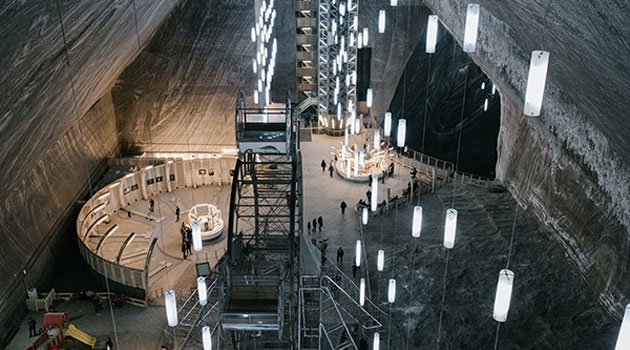SEK 8 million goes to research on urban underground space
Magdalena Kuchler’s project “SubCity: Future imaginaries of the city subsurface” has been granted SEK 8 million from Formas. The purpose of the study is to identify the possibilities of including the underground into the long-term urban planning in Stockholm.
The Swedish Research Council Formas has granted the project SEK 7,995,828 under the thematic call “Planning for transformation”. The study is an interdisciplinary collaboration between the research programmes Natural Resources and Sustainable Development (NRHU) and Geophysics, with Ari Tryggvason as co-applicant.
A rising rate of urbanisation, coupled with climate change impacts and the necessity of low-carbon transition, will put considerable pressure on the increasingly stretched metropolitan areas. To meet these challenges, society will need to significantly and even radically enhance its use of the subsurface below the city landscape.
– The function of cities is already increasingly dependent on the growing number of complex underground infrastructures. The interplay between these rapid geophysical changes and current and future social needs in urban environments lays the foundation for the design of future cities. The purpose of the study is to understand these interactions and identify the possibilities of including the underground into the long-term urban planning in Stockholm, says Magdalena Kuchler, Senior Lecturer in Natural Resources and Sustainable Development at the Department of Earth Sciences.
No urban underground strategy
In 2018, the population of Stockholm County was around 2.3 million, a number expected to increase by more than one million in 2050. This increase will place high demands on land use within the City of Stockholm. In addition, climate change and the transition to a society free of fossil fuels will put further pressure on urban land use. At present, however, the Stockholm metropolitan area lacks any urban underground plan or strategy. Instead, the city’s use of the subsurface is made on the “first-come, first-serve” basis.
By taking Stockholm municipality as our analytical point of entry, the overall purpose of this project is twofold: 1) to develop conceptual tools and empirical insights for understanding the social and technical dynamics of sustainable urban underground planning and use; 2) to provide practical solutions and guidance for long-term planning and envisioning sustainable use of the underground space.
Malin Eivergård
Annica Hulth
Future imaginaries of the city subsurface
- The project will be guided by two interrelated objectives: 1) to investigate what currently happens in the city subsurface and identify challenges and opportunities regarding the future transition of the urban underground space; 2) to anticipate future visions of the city subsurface in terms of transportation, storage, energy, and public uses.
- The project will be conducted in an interdisciplinary environment involving two research units, Natural Resources and Sustainable Development (NRHU) and Geophysics, at the Department of Earth Sciences, Uppsala University.

